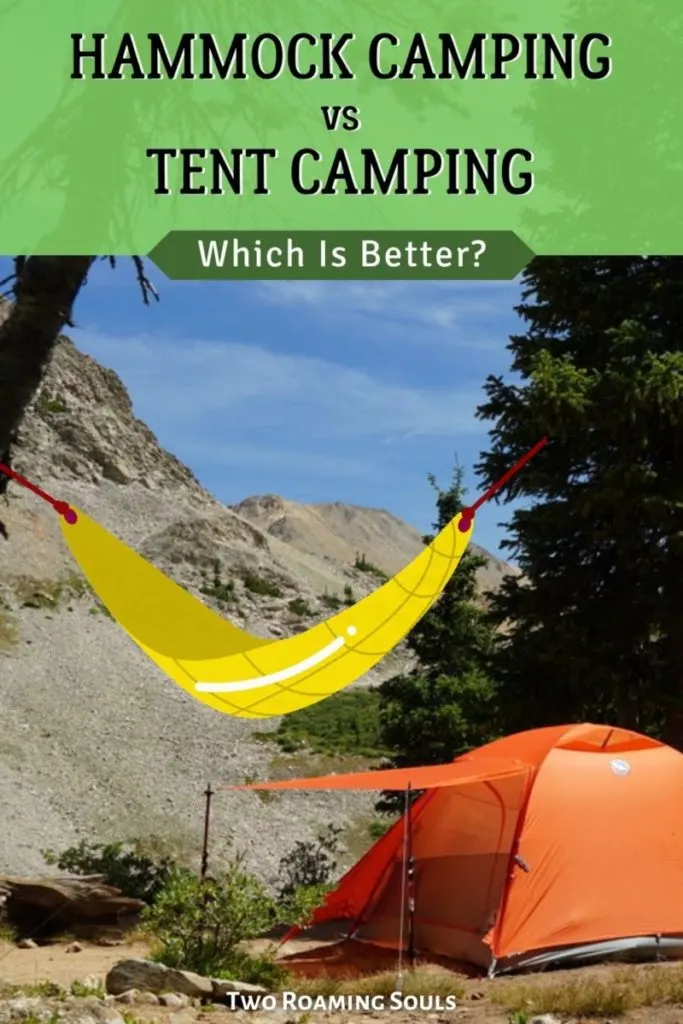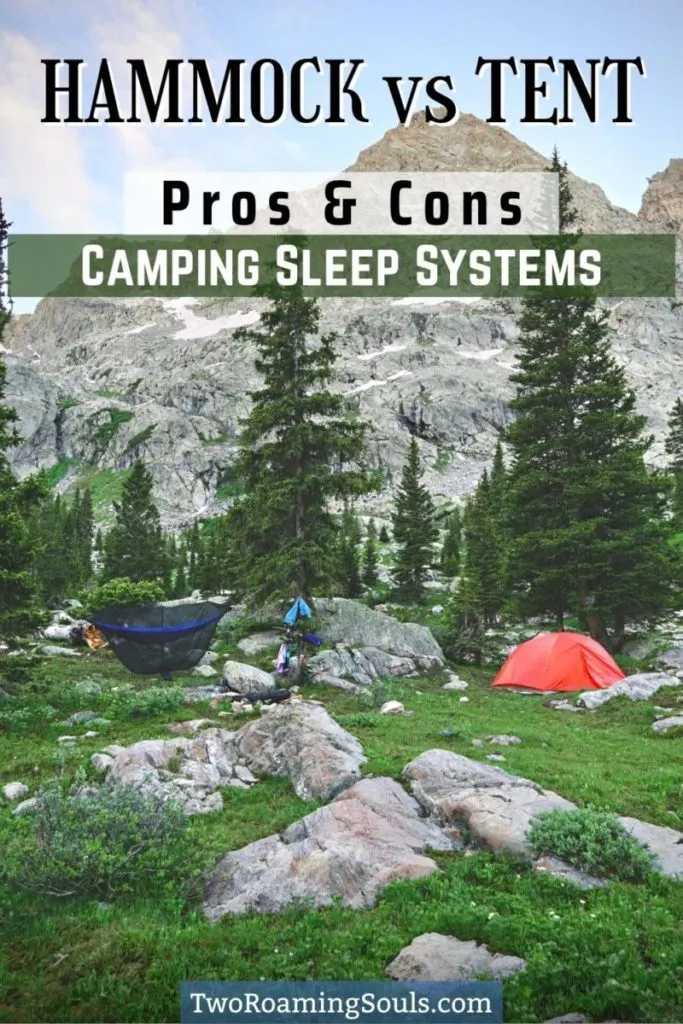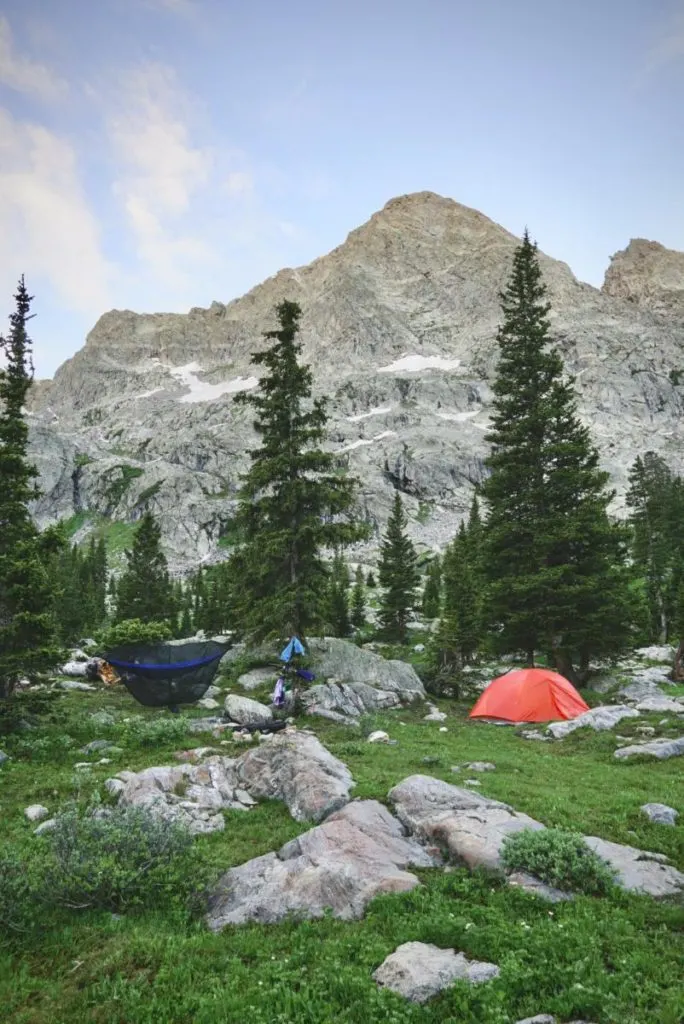
The classic camping shelter has always been a tent. Tents and camping are pretty much synonymous.
However, there is a growing movement of people who are ditching their tents and switching to hammock camping.
But which is better?
This article explains the pros and cons of hammock camping versus tent camping.
Hammock camping is basically what it sounds like—-hang a hammock between two trees and catch some ZZZs elevated off the ground.
The primary benefits of hammock camping are lighter pack weight, faster setup, and potentially a more comfortable night’s sleep. So why isn’t everyone switching to hammock camping?
Well, depending on the complexity of a hammock setup, the weight, setup speeds, and cost become much closer to tent camping.
Let’s dive into some of the realities of hammock camping versus tent camping.
This post may contain affiliate links. Disclosure policy.
Hammock Camping Benefits
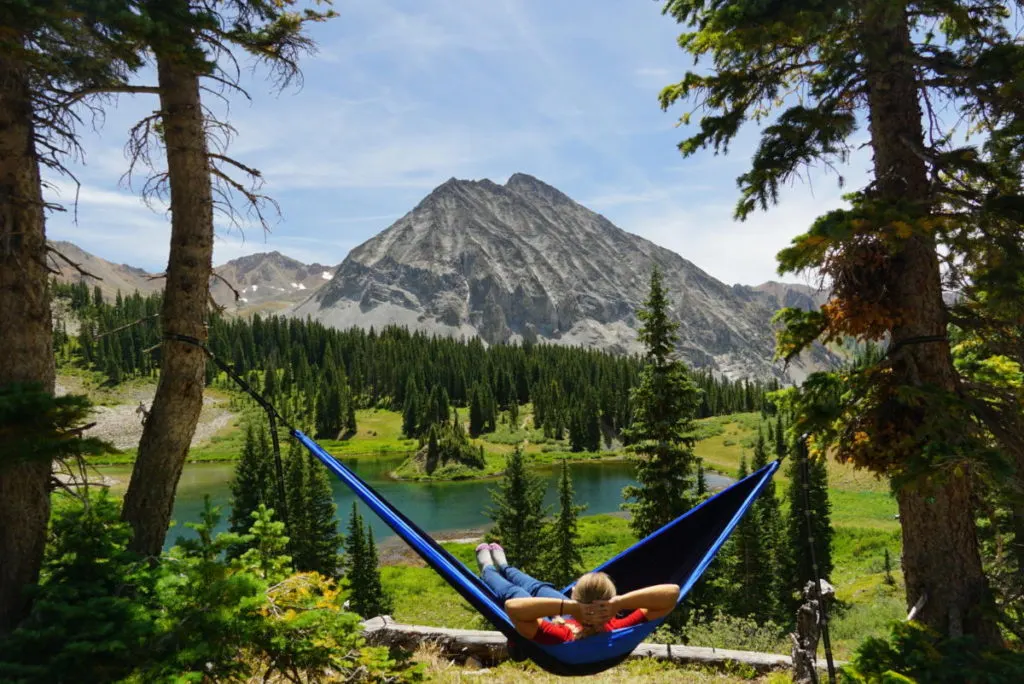
Lighter Pack Weight
Hammocks are generally just a single rectangle of ripstop nylon, some straps, and two carabiners.
A hammock by itself can be drastically lighter than a tent.
However, this doesn’t exactly tell the whole story. In warm weather with no chance of rain, you can sleep rather comfortably with just a hammock and a sleeping bag. But for comfortable 3-season hammock camping, it requires some additional pieces of gear. More discussion about this below.
More Comfortable Sleep
While this may be subjective, many hammock campers would attest that their hammock is much more comfortable than any sleeping pad.
Sleeping on the ground creates pressure points, while hammocks are much more forgiving. Back sleepers and side sleepers are both able to get comfortable in a hammock with some practice.
“But wait… don’t hammocks bend your body into the shape of a banana? How is that good for sleeping?”
Well, when used properly, you can lie surprisingly flat in a hammock.
But yes, too much curve is definitely a bad thing, so here are a few important techniques for making sure that you can lay relatively flat in a hammock.
The main thing is hanging the hammock loosely and laying diagonally across the hammock. This technique allows you to lay much flatter in a hammock.
And there is some evidence to even suggest that gentle rocking is good for sleep quality.
Doesn’t Require Flat Ground
Many backpackers can relate to the trouble of finding a perfectly flat and smooth surface to pitch their tent.
We’ve all experienced that night with an unfortunate rock or root right under our sleeping pad.
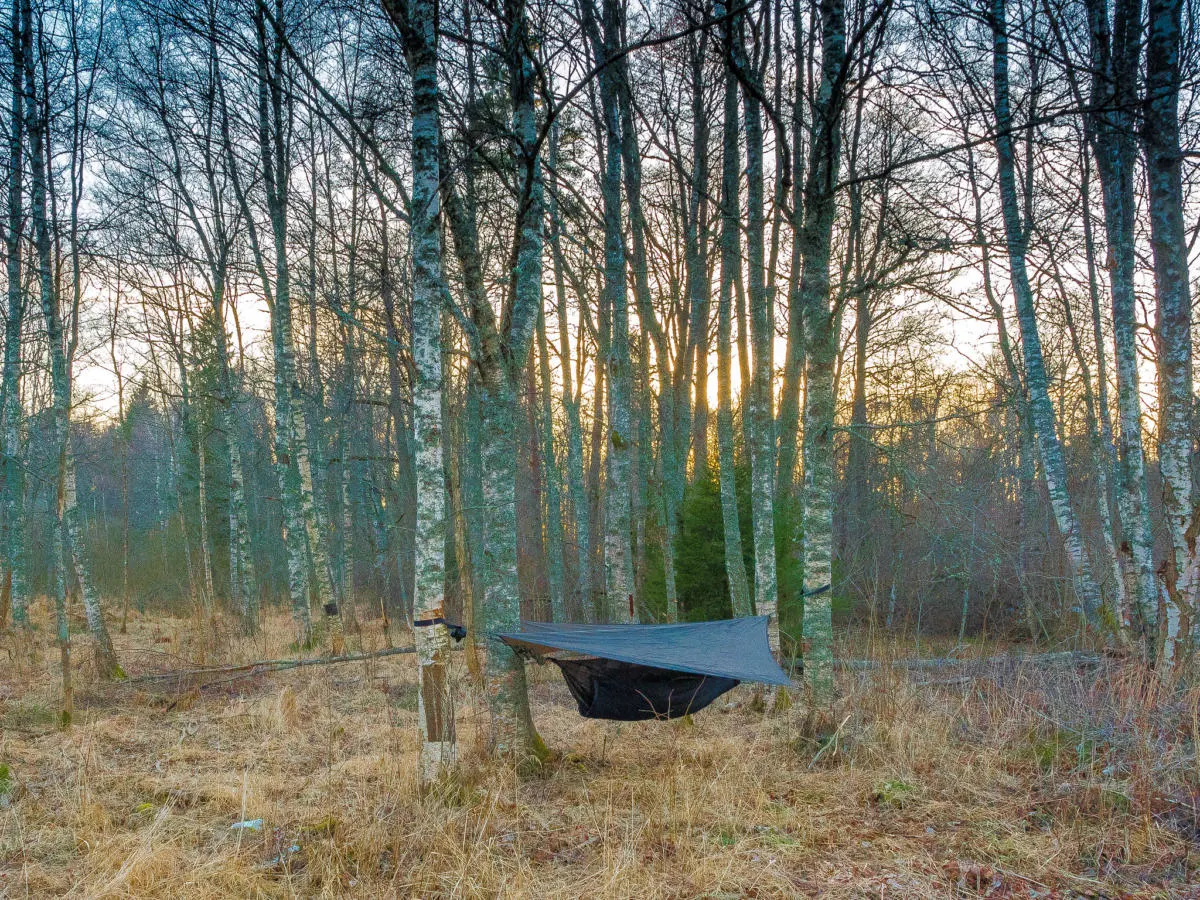
Hammocks can eliminate this challenge entirely. You can hover effortlessly even over the harshest ground conditions.
Less Expensive (Potentially)
A high-quality hammock and rain-fly is much cheaper than a high-quality backpacking tent. But if you factor in additional pieces of hammocking gear, then the price difference begins to narrow.
Plus, two people can share the cost of a tent, while the majority of hammock setups are designed for one person.
Hammock Camping Negatives
You Need Trees
If you are camping in a place without trees, like the desert, then you may be completely out of luck with a hammock. And trees also need to be the proper strength and distance apart. So heavily forested areas are ideal for hammock camping. But also not too dense with trees, where you can’t even fit a hammock in between.
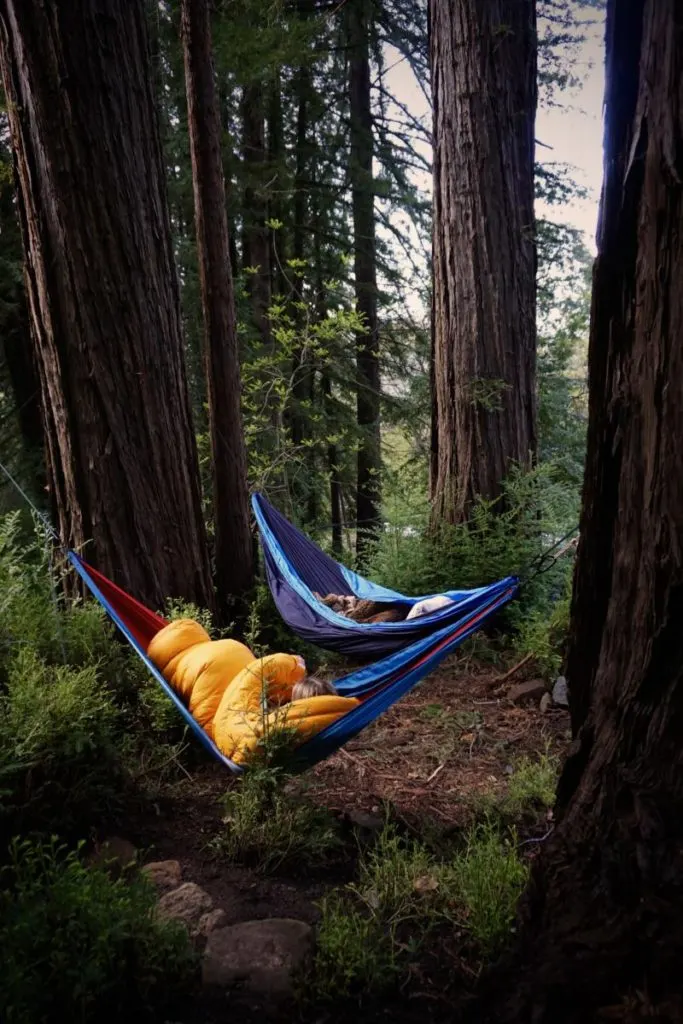
For example, in my home country USA, the eastern half of the country tends to be better for hammock camping because generally, the forests are denser. And the worst area for hammock camping is the Southwest because there are so fewer trees.
Feeling Exposed And Isolated
Some people don’t like the feeling of hanging out in the open.
When you are accustomed to the walls of a tent, it can sometimes feel like you are just a hanging sausage link waiting for hungry bears to come feast. Probably unrealistic, but that doesn’t stop people from thinking those thoughts. (Read up on Bear Safety here).
Colder Sleeping
When you sleep in a hammock, cold air can constantly pass under your body.
So rather than warming up a spot on the ground and having a tent to block the wind, you can experience cold wind passing all around your body.
And to make matters worse, when using a regular sleeping bag in your hammock, it gets compressed by your body weight. This compression eliminates the loft (thickness) of your sleeping bag and prevents it from insulating properly.
So it’s very easy to get a cold back when sleeping in a hammock this way.
To fix this, hammock campers who sleep in colder weather would be wise to invest in additional insulation.
There are a few common techniques for staying warm in a hammock. The first is to put a sleeping pad inside your hammock to add some extra insulation. The best types of sleeping pads for this are mummy-shaped pads that have decent insulation (high R-value).

The second thing is a product called an underquilt. It’s a sleeping bag that is designed to go on the outside of your hammock and cradle under your body.
This design lets the underquilt maintain its loft, and thus, its ability to keep you warm. However, underquilts don’t usually take the place of your normal sleeping bag, so you may need to carry an underquilt in addition to a traditional sleeping bag. (Here are the best underquilts on the market).
Need To Purchase A Separate Rainfly
If you encounter precipitation, then it’s important to have a rainfly for your hammock camping setup. It’s usually just a waterproof tarp that you suspend over your hammock (from the same trees). And then stake out the corners to create a roof over your hammock.

The rainfly is crucial for making sure you are properly protected from the elements. But unlike a tent, they are almost always sold separately.
No Shelter To Hang-Out In
And even with a rain fly, it still doesn’t give you a good place to spread out your gear.
You will have to keep your pack and other gear outside on the ground or hanging from your hammock straps.
And a hammock isn’t the best place to pass the time during storms. Especially for groups who might otherwise congregate inside a tent.
What About Bugs?
To keep out bugs, you may choose to add a bug net. But it’s another hammock accessory that is usually sold separately.
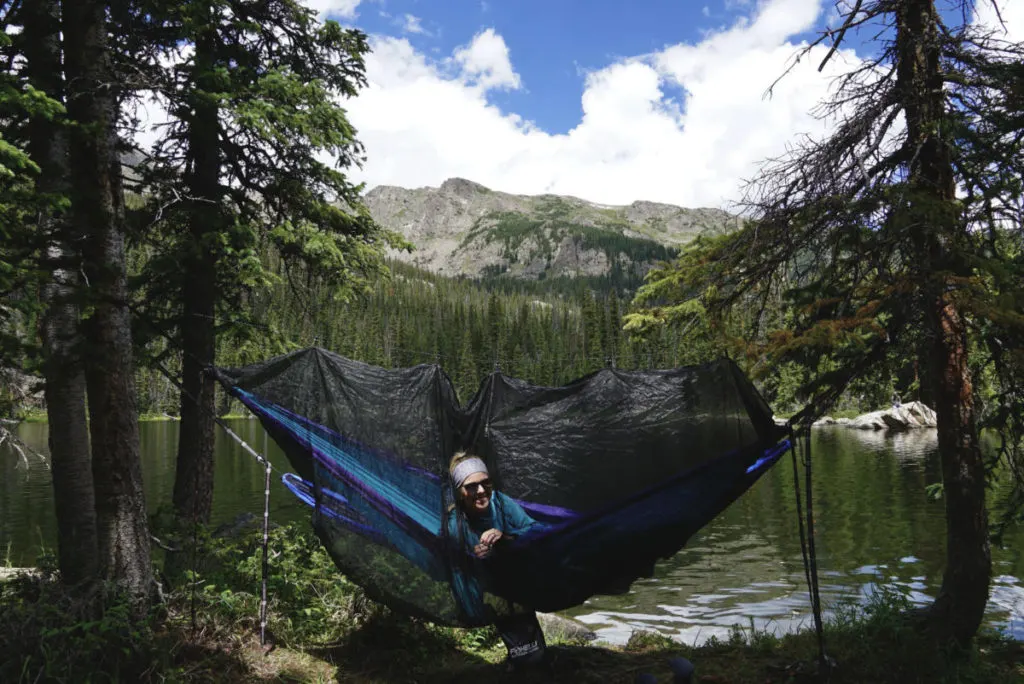
So I think you may be starting to see that a hammock camping setup isn’t quite as simple and streamlined as it seems. Once you add up the cost and weight of the hammock, straps, underquilt, rain-fly, and bug net, your hammock camping setup may cost and weigh nearly the same as a tent camping setup.
Tent Camping Benefits
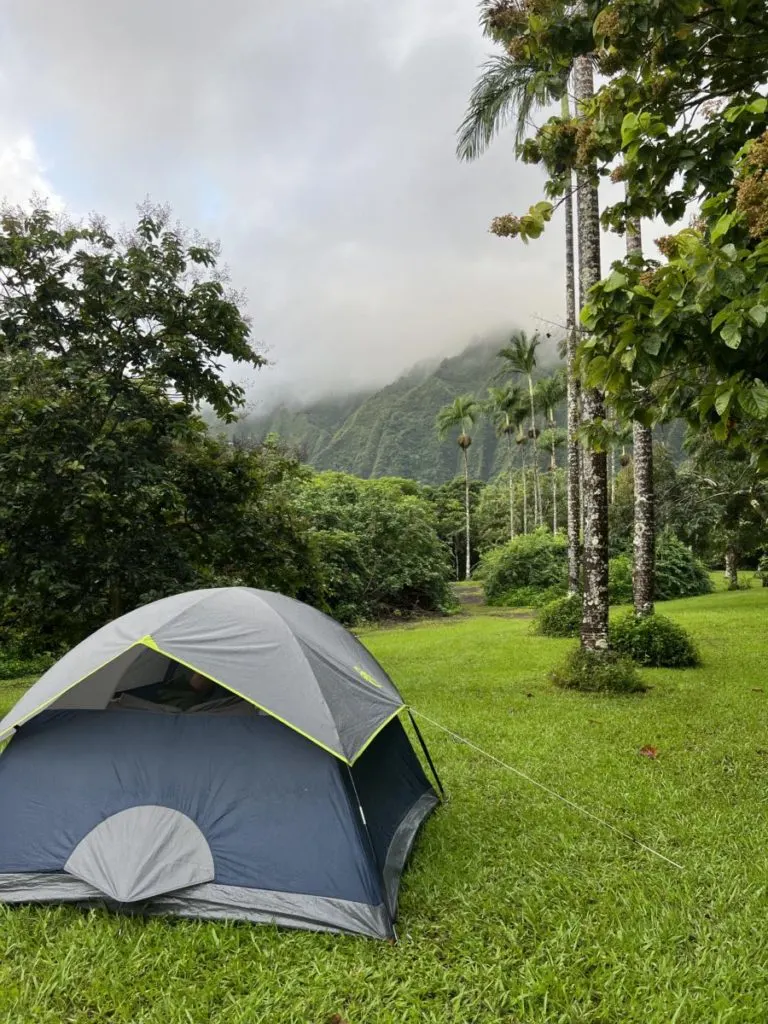
A True Shelter
Tents provide a true shelter from the elements that can stand up to wind, rain, bugs, and more. Tent campers have interior space where they can sit upright, change clothes in privacy, and wait out a storm together.
Warmth
When you set up a sleeping pad in a tent, your body will slightly warm up the ground under you. And the walls of the tent provide some protection from the wind.
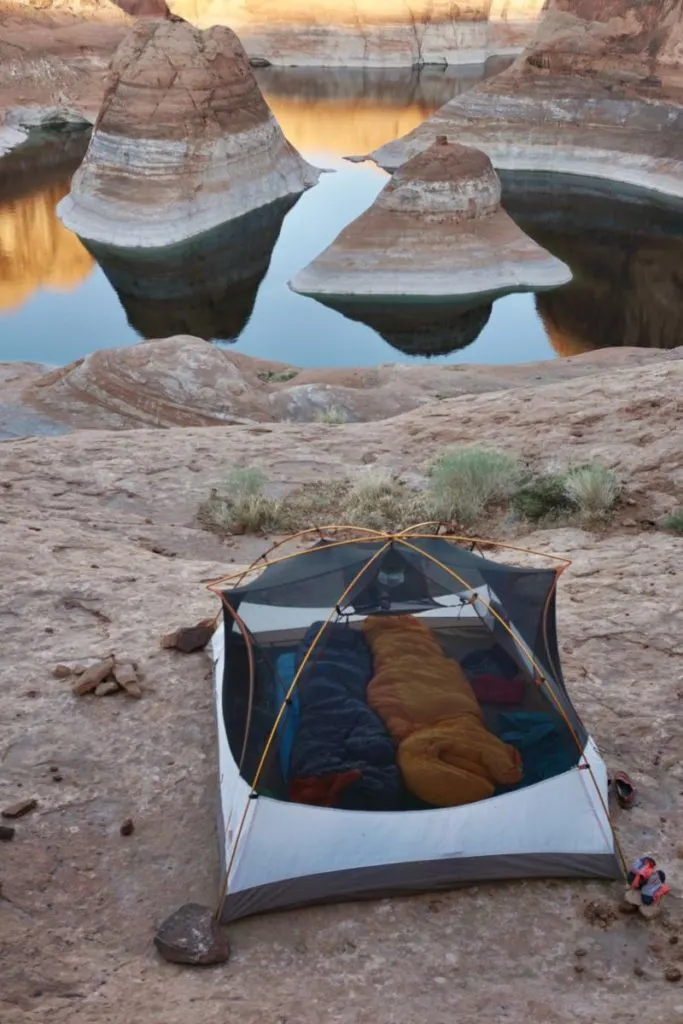
All things being equal, you will sleep noticeably warmer in a tent. And when multiple people share a tent, their body warmth can work together to warm up the inside. Hammock camping doesn’t have these warmth benefits.
Psychological Comfort
Just the familiarity of tents makes them more enjoyable for some people to use.
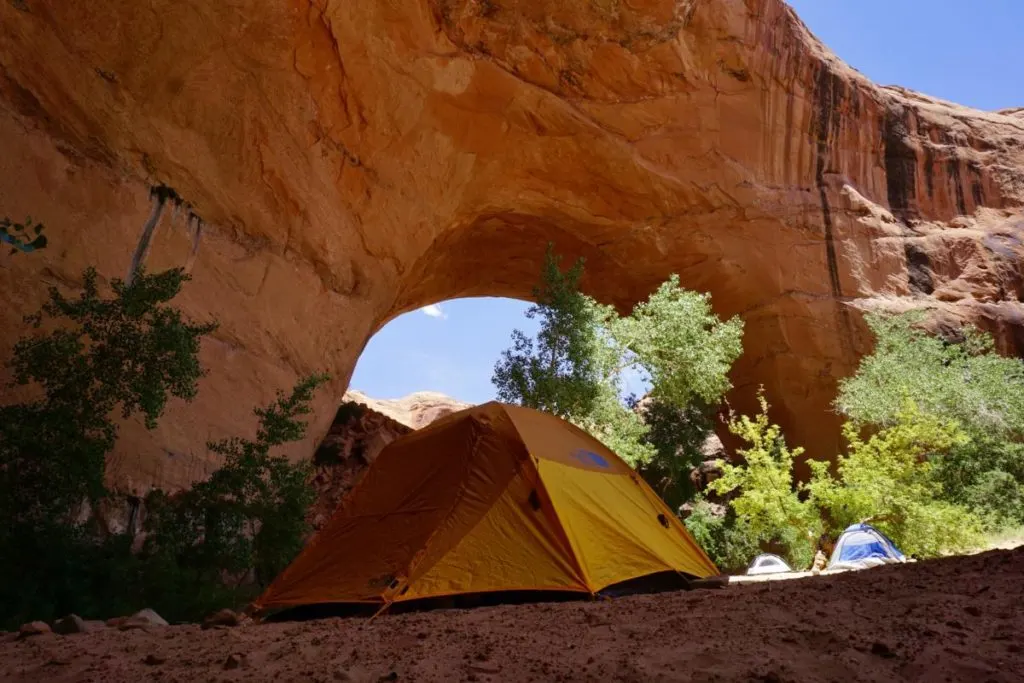
Even though the walls of a tent are paper-thin, they still provide a certain sense of comfort and security. And if tent camping is what you’ve always done, then there is no perceived learning curve.
Good For Couples and Dogs
Most couples who are accustomed to sleeping together in the same bed prefer to be in a tent where they can sleep side by side.
And if you camp with a dog, then it’s much easier to get comfortable with your pooch in a tent compared to a hammock.
Tent Camping Negatives
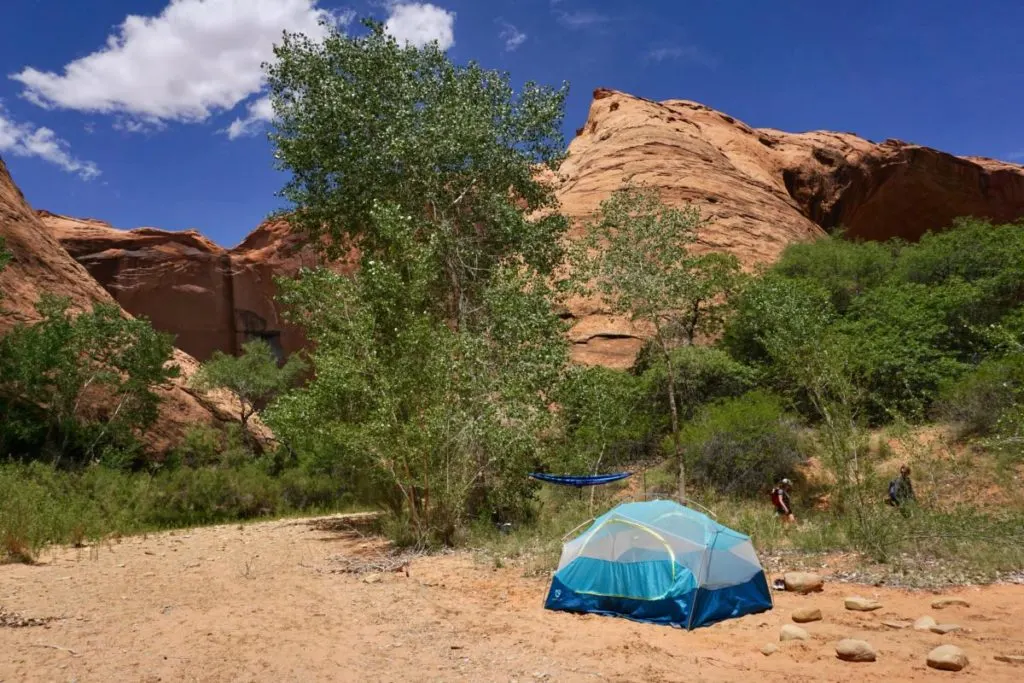
More Weight (Potentially)
Generally, a tent setup will weigh more than a hammock. The metal poles, stakes, and rainfly can contribute to a much higher total weight.
However, as mentioned before, this isn’t quite black and white. A fully accessorized hammock setup with a rain fly, bug net, and underquilt can be just as heavy as a tent.
Finding a Tent Site
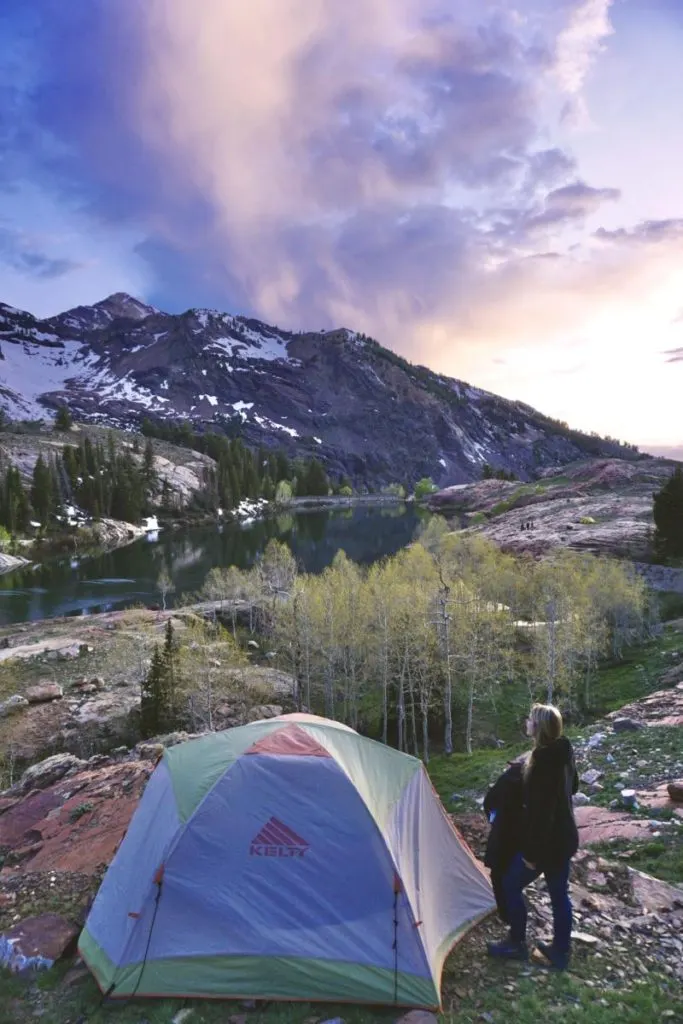
It can be a challenge to find a flat and smooth site for pitching a tent. And the sloped tent site or rocky ground can make for a bad night’s sleep.
More Expensive (Potentially)
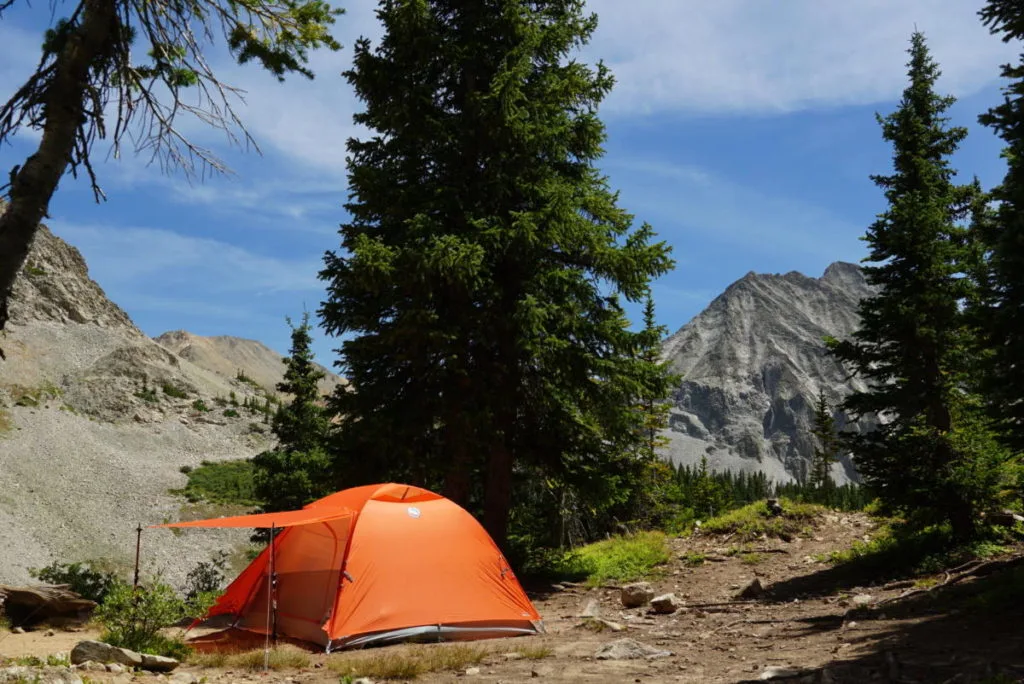
A high-quality backpacking tent is more expensive than a high-quality hammock. Our beloved Big Agnes Copper Spur is much more expensive than a hammock setup (even with a rainfly and underquilt).
However, if you start adding additional gear to a hammock setup (rain fly, bug net, underquilt) then the cost difference begins to even out.
And tents can be shared by multiple people. Thus sharing the cost as well.
Conclusion | Hammock Camping Vs Tent Camping
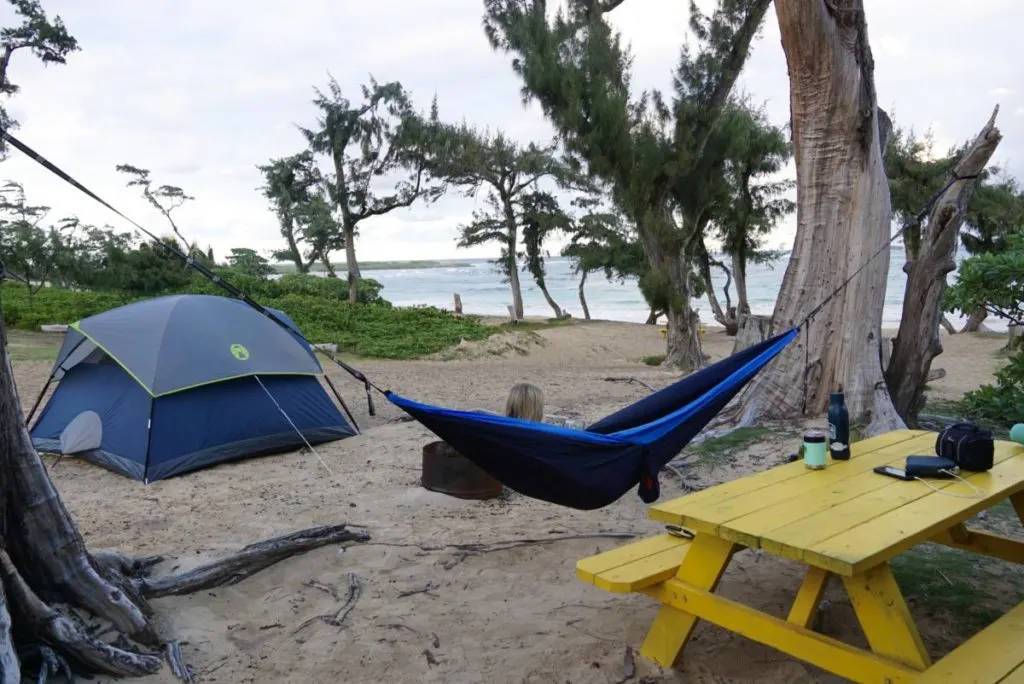
So as I explained, some of the perceived benefits of hammock camping aren’t always as profound as they seem. If you add some accessories to your hammock setup like a rain-fly, bug net, and underquilt, then it might be similar in price and weight to a backpacking tent.
But if you are able to hammock camp in a warm climate, with no chance of rain, or bugs, then you can get away with carrying only a hammock and sleeping bag. This is still BY FAR the lightest setup if you can pull it off.
And it’s hard to deny the comfort of hammocks compared to a sleeping pad on the ground. But the real question is, do you sleep better in a hammock or a tent? This may come down to personal preference.
If you are interested in making the switch, then consider bringing both a tent and a hammock on a short overnight trip. Test out the hammock, and if you don’t like it, you can always switch back to the tent.
Our Take:
Emily and I absolutely love hammocking, but we have yet to abandon our tent and switch to overnight hammock camping. For us, hammocking is more of a leisure, relaxation activity.
But we love hammocking so much, that we are usually willing to carry our hammocks in addition to our tent when we go backpacking. There is no more comfortable way to relax at camp than in a hammock.
So we are full-time tent campers (for now). We really appreciate being able to sleep side by side in the tent and have our own little “home” on the trail.
Additionally, we spend a decent amount of time every year camping in the desert, so we would never be able to make the switch completely (lack of trees).
Share This ‘Hammock Camping vs Tent Camping’ Guide On Pinterest!
